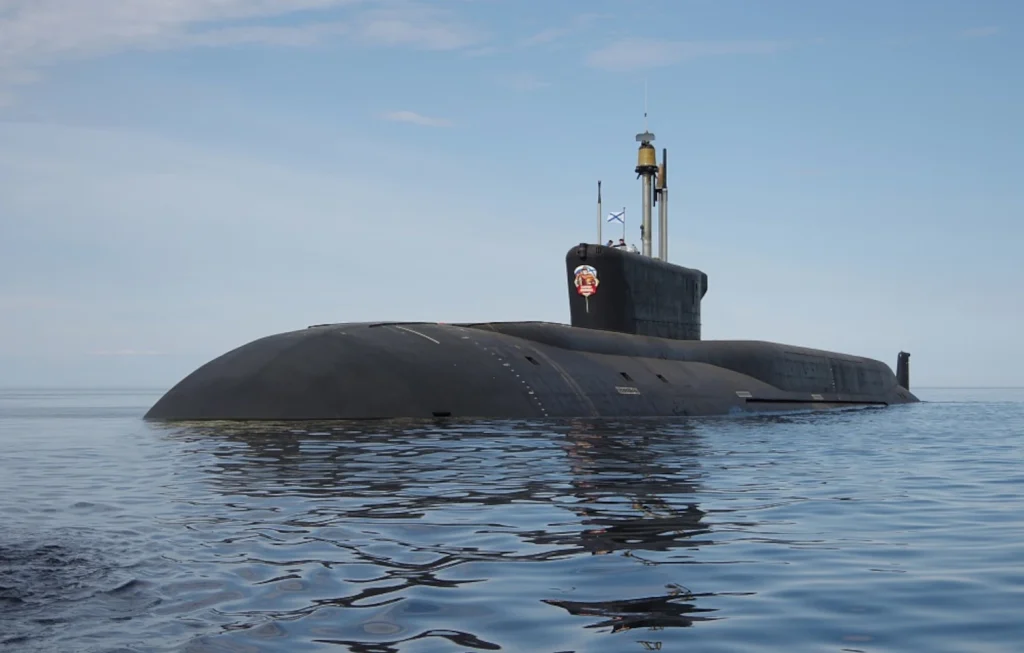The Russian Navy is known worldwide for its nuclear submarines, and one of the most dangerous submarines of the Russian Navy is the Borei or the Borey. The “Generalissimo Suvorov” is the sixth vessel of Russia’s 4th generation ballistic missile submarines and the third of the upgraded Borei-A class. The sub is ready to head for sea trials and will be inducted by December 2022.
The firepower is provided by sixteen R-30 Bulava-30 ballistic missiles capable of carrying six to ten warheads with a yield of up to 160 kilotons. This SLBM boasts a maximum effective range of 8,500-10,000 km and a GLONASS-based digital inertial navigation system. The missile’s multiple warheads (MIRV) and capability to adjust its flight trajectory make it an elusive target for American missile defense systems.
The Boreas are very quiet and can spend a lot of time in the depths of the oceans, remaining unnoticed by the enemy. The mere fact that the Russian Federation has such secretive “killers” has a strong psychological impact on the United States and the desire to possess an equally powerful weapon.
Borei-A class submarines – Russian Navy’s submarines are deadlier than ever
In August 2021, Russia began the construction of two new Borei-A class submarines. The submarines “Knyaz Potemkin” and “Dmitry Donskoy” will replenish the Russian Navy in a few years.
The first Borey-class submarine, Yuri Dolgoruky, was designed during the Cold War, but its construction began only in 1996, and it was commissioned only in 2013. Each Borey-class submarine has six torpedo tubes and 16 silos capable of launching the new R-30 Bulava ballistic missile. One such missile can carry six to 10 warheads with a payload of 100 to 160 kilotons.
Although the Borei-class submarines are significantly smaller than the strategic submarines Akula (NATO classification Typhoon), the Borei are the most advanced nuclear-powered submarines ever built by Russia. They have new electronics and control systems, as well as a power plant, due to which the ships have become noticeably quieter than their predecessors.
A new subclass has emerged, designated ‘Borey-A” due to design changes during the construction delay. These ships are slightly larger and have even more advanced technology.
Four submarines of the Borey class are currently in service with the Russian Navy, and another submarine ‘Knyaz Oleg’ is undergoing sea trials. This submarine recently performed a test launch of the Bulava missile.
Two Borey’s serve in the Pacific Fleet – K-550 “Alexander Nevsky” and K-551 “Vladimir Monomakh”. By 2027, the Russian fleet plans to deploy ten Borey-class submarines.

The Borey project was conceived as a replacement for the ageing Soviet strategic submarines of the Akula and Dolphin class. It represents an entirely new concept, which has many differences from the technology of previous generations. The first three Borey submarines were built according to the basic design, and the remaining seven will be upgraded or built to version 955A (Borey-A). The 955A update includes improved onboard electronics, minor changes to the hull design, more sophisticated weapon targeting protocols, and smaller physical size, which will naturally positively affect stealth.
The submarine with a displacement of twenty-four thousand tons can reach speeds of up to thirty-three knots, which allows it to be twice as fast as its predecessors from Project 941 “Shark”.
Once all the ten Borey’s are delivered to the Russian Navy by 2027, they will be the backbone of Russia’s navy nuclear deterrence. Some will replace the out-going Delta-III subs in the Pacific Fleet and the Delta-IV subs sailing with the Northern Fleet.
The Russian Navy plans to deploy Borey-class submarines in the Atlantic, Pacific and Arctic oceans. They will hide these in the waters and wait in the wings. The realization that these ships are hiding somewhere underwater should deter the United States from military aggression against the Russian Federation. Otherwise, “Borey” will have to remind them of their existence.
